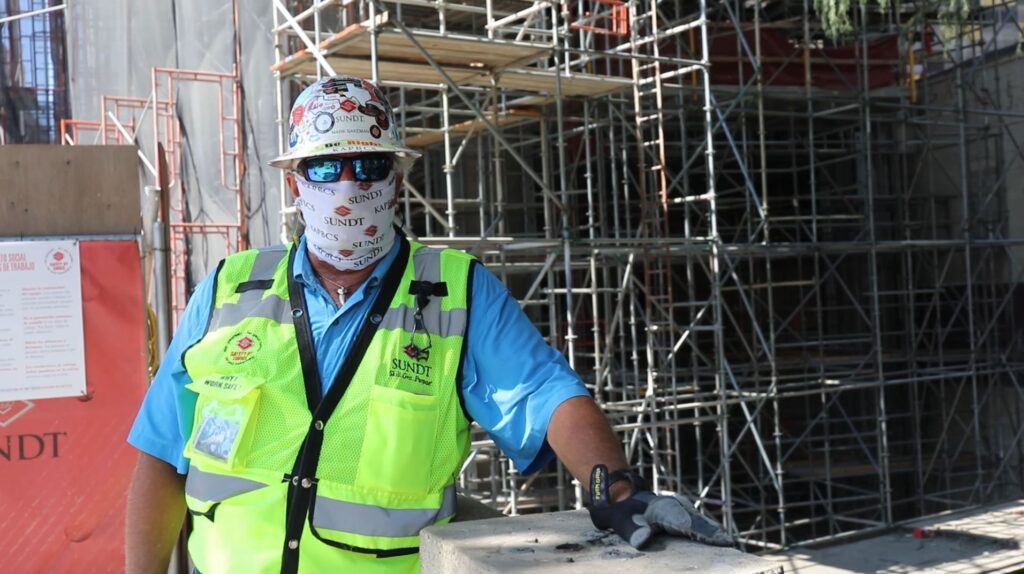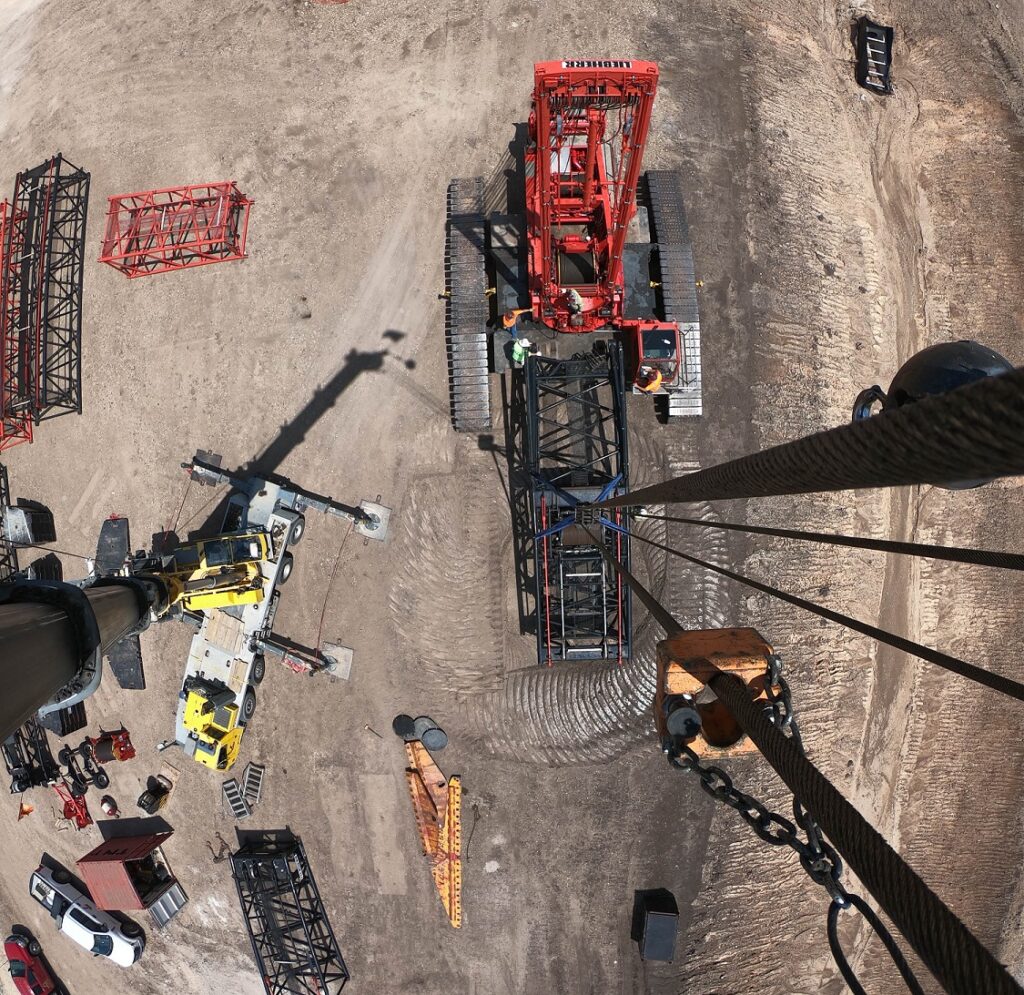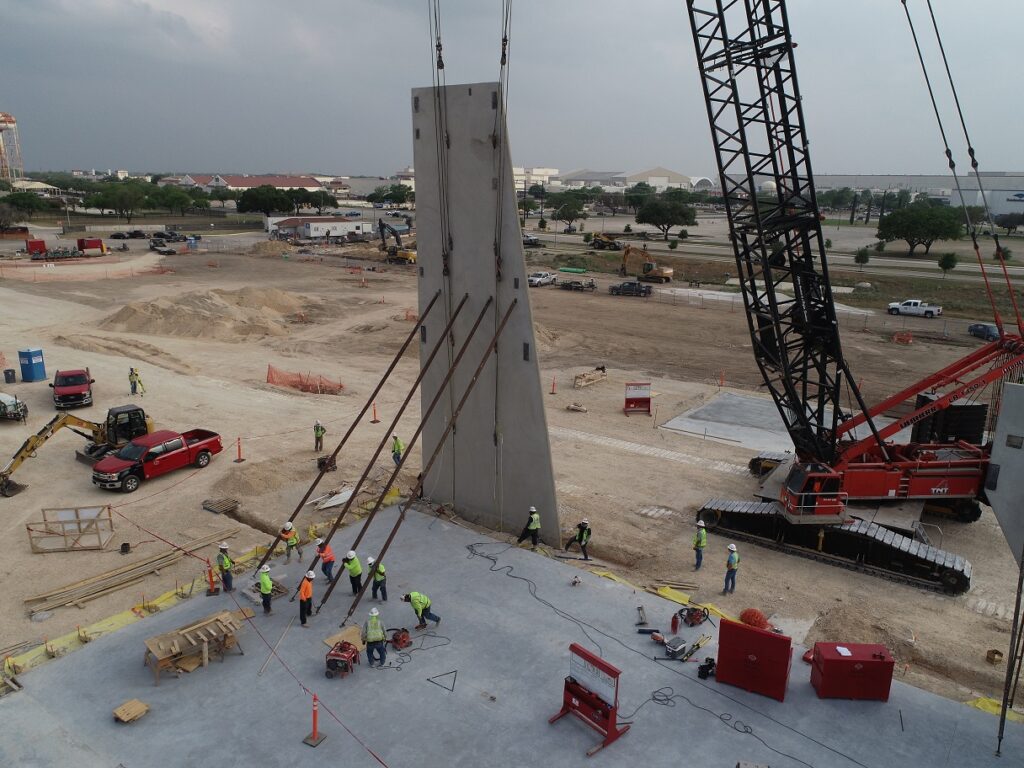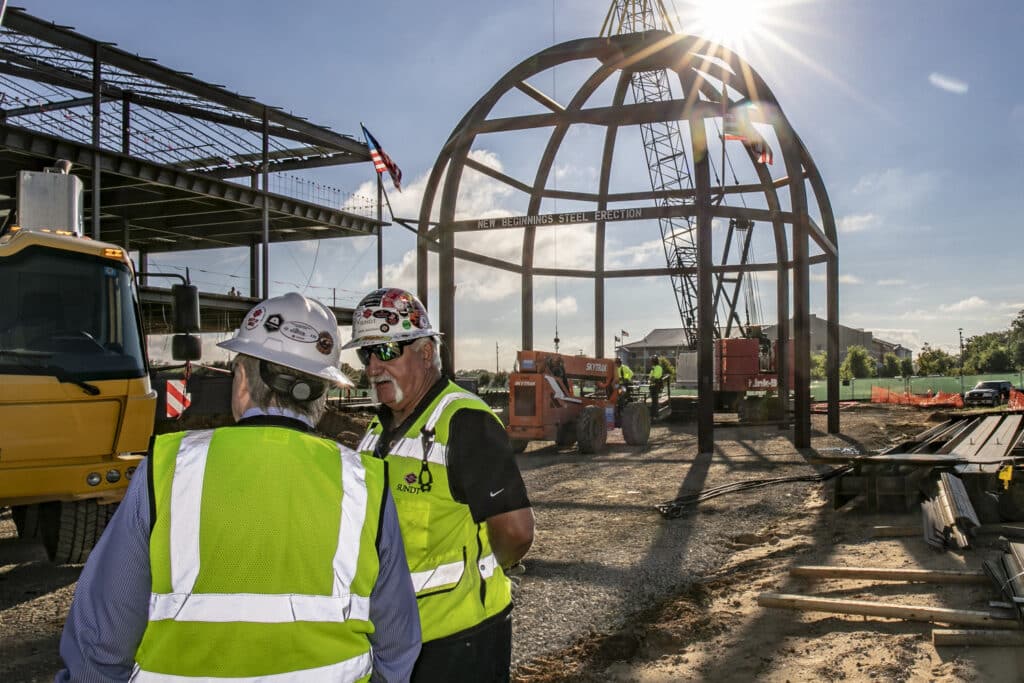You’d think after 45 years in an industry, a person could rightfully rest on their laurels and declare they know everything there is to know. But for Mark Bakeman, there is always more to learn and improve upon—especially when it comes to creating safer jobsites. To promote national Construction Safety Week, Mark took a few minutes between his many responsibilities to tell us about his role as Area Safety Manager for Sundt’s Building Group, Texas District, as well as Sundt’s commitment to tackling our industry’s most dangerous safety hazards.

Our theme this year is “Hazard Recognition vs. Risk Tolerance.” What does that mean, and why is it our focus?
It’s about helping people understand: hey, there’s a difference between your level of comfort doing a task that involves risk, and the actual risk potential that something could go wrong. No one is perfect, and we act on reasons that make sense to us in the moment. So, let’s look at safety from the standpoint of human nature.
For us, that means training people to recognize hazards first, helping them see the why and create buy-in, and then developing the right level of risk tolerance. This applies to the new guy and the person who’s been in their trade for 20 years. The former might just be unaware something is dangerous; the latter might be used to doing things a certain way and think “that won’t happen to me.”
“When I was a 20-year-old union ironworker, if someone would have told me, “You need to tie off” on a four-story building, I would have laughed. Now, I wouldn’t go above six feet without being tied off. Did the level of danger change? No. But my awareness of it did, and my ego did too. That’s why I’m passionate about this work—it’s about educating and empowering people to make good decisions, so they can return home safe to their families.”
– Mark Bakeman, Area Safety Manager for Sundt’s Building Group, Texas District

Mark, how long have you been in the construction industry, and how much of that has been working in safety?
I got my start in construction in 1976 as a third-generation ironworker, following in the footsteps of my grandfather and my dad. In 1996 I left Miami, Florida, where I grew up, and moved to the San Antonio area, and I started working for a crane company as their safety director. Following that, I served for seven years as the safety director of the AGC San Antonio Chapter, which at that time had about 450 members.
From there, I worked for a local GC, building their safety program from the ground up, before eventually arriving at Sundt in 2014. It was clear Sundt was really committed to their safety culture, and that helped my decision. In adopting that culture and growing our region, we’ve seen our share of challenges. But I’m really proud of where we are today and how far we’ve come. I currently oversee our safety operations in Dallas, El Paso and San Antonio.
What does your role invol—Is that a squirrel making noise in the background?
It’s a turkey! It’s actually my ringtone. Just reminding me I should be out hunting—it’s turkey season here. Sorry about that. What was the question?
Ah, gotcha. What does your role involve as Area Safety Manager? What part of that are you most passionate about?
I look at my role as providing a service, and l view each project as a unique client. I’m always asking: What do you need? How can I support you? The day-to-day is helping our people and our subs identify hazards and set up their jobsite correctly. I’m passionate about setting expectations and a strong safety culture from day one.
As an industry, in my opinion, we still have a long way to go in the area of pre-planning. We’re still reactive in a lot of ways, but companies like Sundt are working to change that. Recently, our Scheduling Manager Hannah Schumacher and I developed a six-week look-ahead item, and this is helping our teams identify high-risk activities throughout the schedule. Seeing that pre-planning on our recent work out at Port San Antonio proves its importance. Our team there did an amazing job of preparing and working with the crane company so we could hit the ground running, and we actually finished that scope four days ahead of schedule.

“On a high-risk activity like tilt-up construction, you have so many moving parts. You have the crane, but also ground stability, all of your rigging, panel attachments and inserts, and then the panels themselves weigh 104,000 pounds each. So many things can fail—every single person has to be on their game. That’s why our pre-planning and sequencing here was key.”
Over the past year, our Health, Safety and Environment Department has rolled out the S#*! That Can Kill You (STCKY) framework. How has this pushed Sundt’s safety culture forward?
I think our new focus with STCKY is something everyone should be excited about. Since the ’70s, our industry has pushed “zero injuries.” Injuries have gone down, but construction still has the most fatalities of any field, with numbers reaching a plateau over the last 10 years. Also, as a state, Texas has the most workplace fatalities.
The approach with STCKY is to make people aware of the most fatal hazards, and empower them to mitigate those hazards. If our only message to people is, “Never make a mistake, anywhere, with anything,” it doesn’t help them discern the most dangerous, urgent things on their jobsite. So, obviously, we still have a daily goal of zero injuries, but with a focus on tracking and addressing a jobsite’s most dangerous activities. That’s a big shift in thinking, and it’s going to take time to get it right, but I think we’re heading in the right direction.
